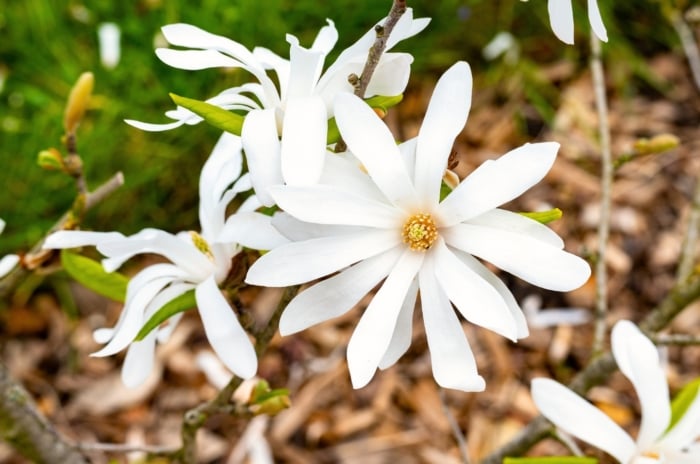9 Ways to Add More Evergreen Color to Your Landscape
From the ground up, evergreens add a splash of all-season color and interest in form, texture, and features. It’s easy to incorporate these solid foundations of the landscape, whose appeal lasts well beyond winter. Join gardening expert Katherine Rowe in exploring evergreens with heightened colorful attributes and how to give them a garden presence.
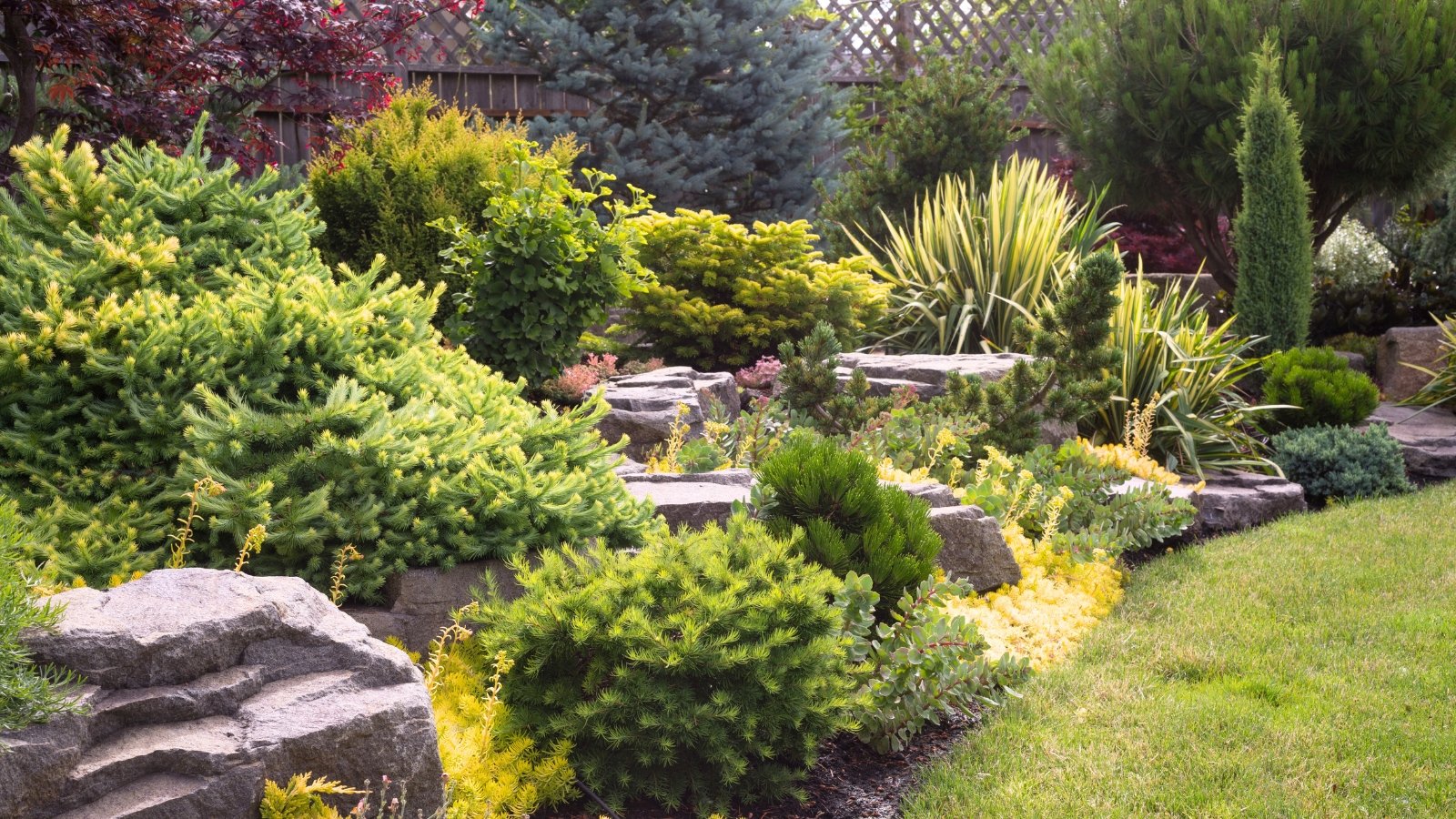
Contents
When winter arrives, so does a study in contrasts. The balance between deciduous forms and structural evergreens is apparent, with both adding valuable seasonal interest. The ornamental appeal of evergreens isn’t limited to winter, as they also add color, texture, and form year-round.
Evergreens anchor the landscape in dynamic hues of blue-green, deep forest, and gold, among many others. From broad-leaved to needled, the hardworking selections serve as focal points, border specimens, and garden unifiers.
Colorful evergreens also boast new growth that emerges in fresh tones or transitions in autumn’s cooling temperatures. Flowers, berries, and cones add to the appeal. Meanwhile, variegated and multicolored foliage brings high visual interest, too. Here are nine ways to add more evergreens to your landscape.
Layering the Landscape
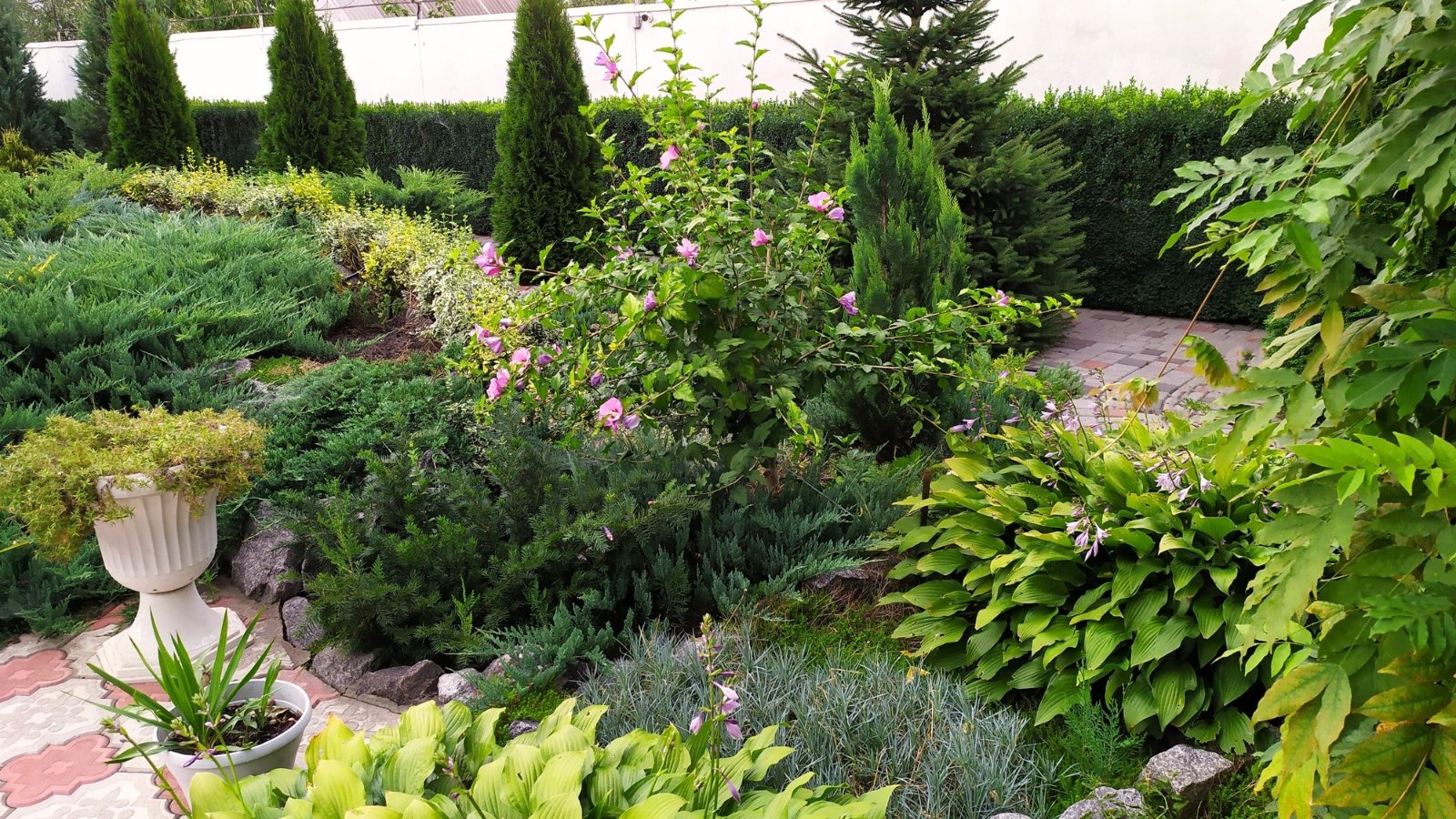
To maintain a balanced display year-round, incorporate a mix of evergreens and deciduous specimens. Evergreens anchor the arrangement when flowering shrubs and perennials take a winter break. Needled conifers and broadleaved selections also contrast with the interesting forms and seedheads of bare branches.
Incorporate larger specimens and balance them with lower-growing shrubs, perennials, annuals, and groundcovers. Differing heights and habits create welcome variation. Evergreens in each landscape layer ensure a stable landscape all year.
Incorporate Groundcovers
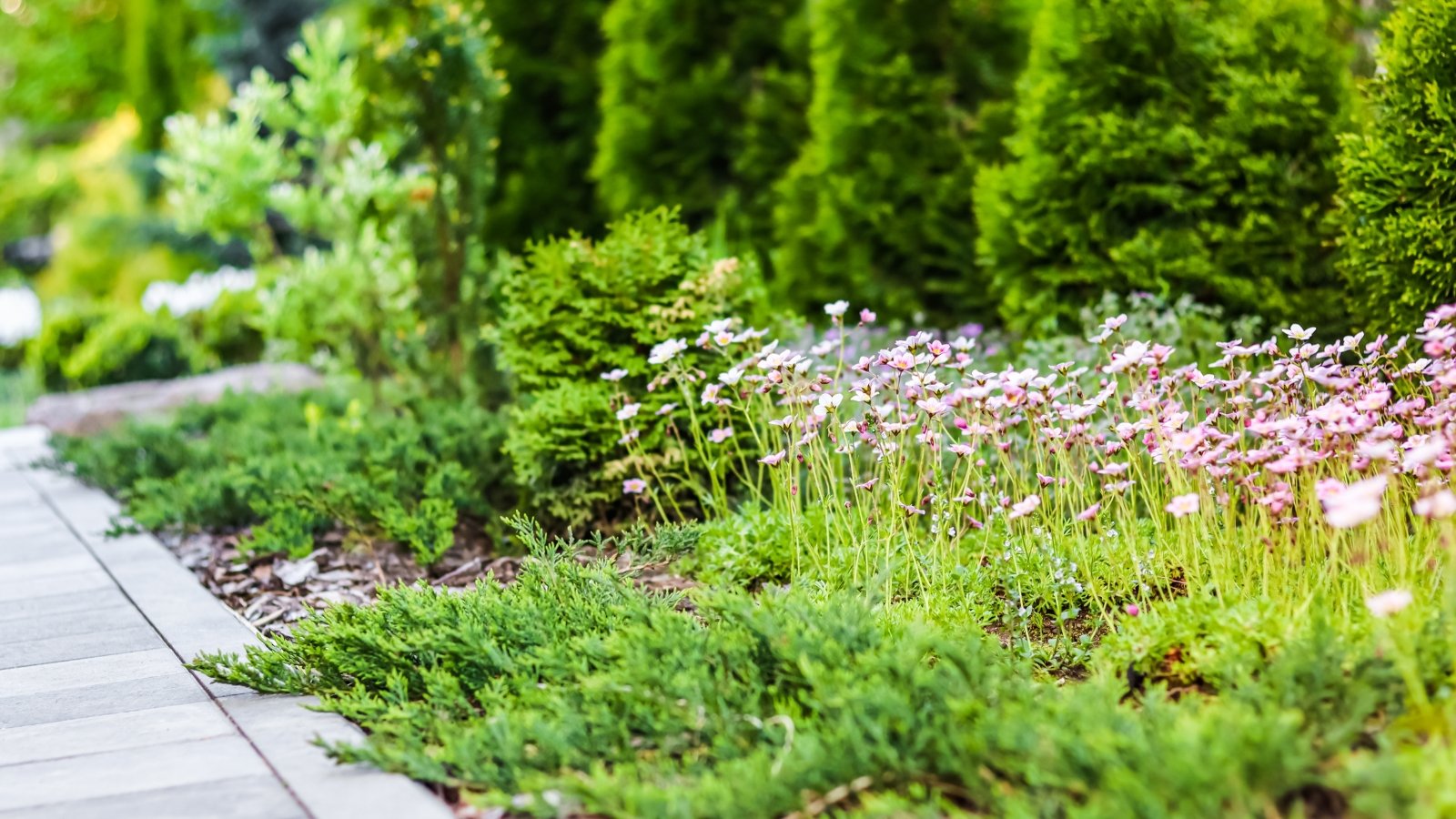
Evergreen ground covers offer attractive foliage, sometimes with berries and blooms, that soften and unite garden spaces with sweeping greens. They infill gaps and function as lawn alternatives. They also suppress weeds, stabilize soils, and provide habitat through shelter and forage.
Bearberry
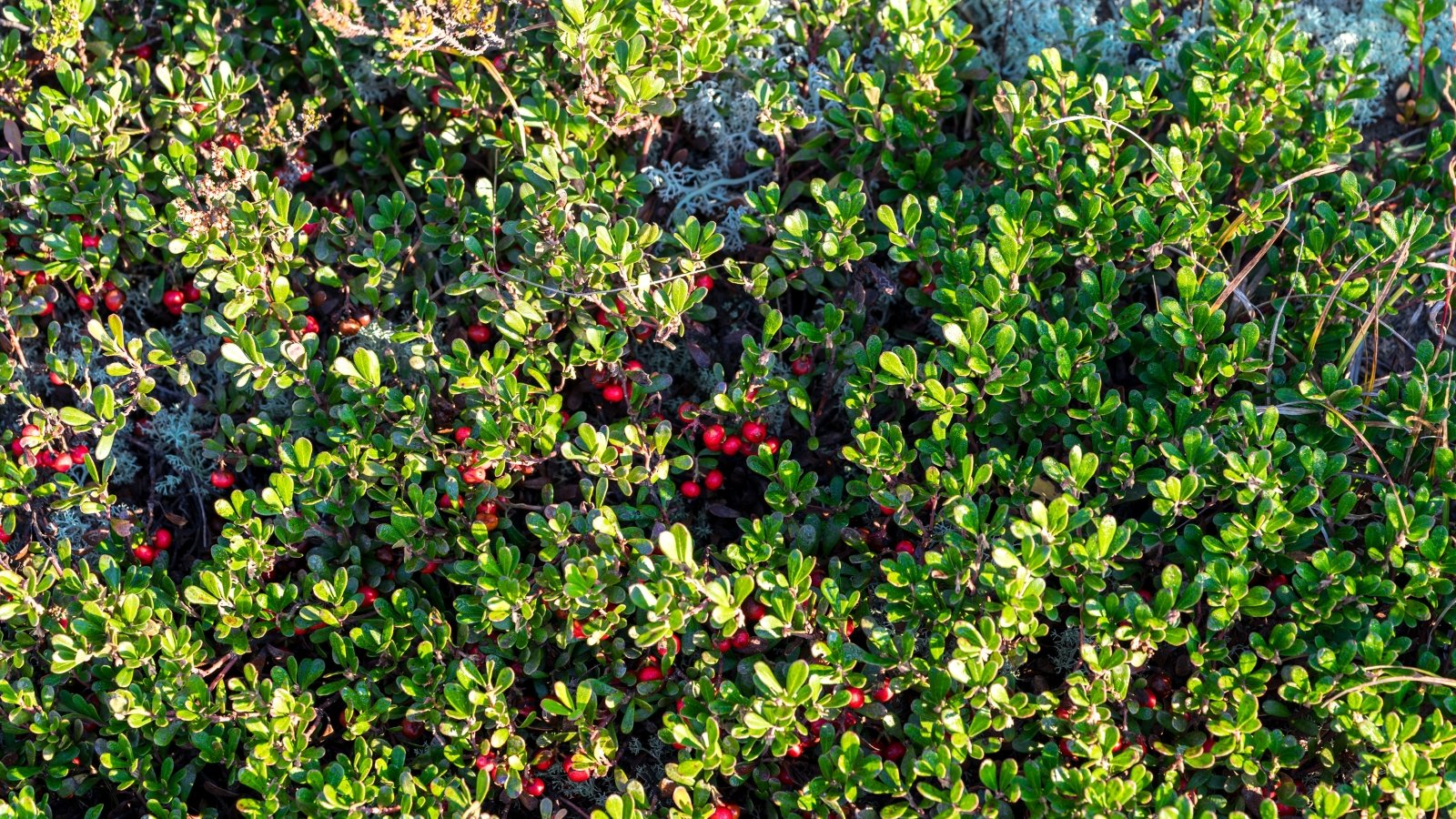
|
|
botanical name Arctostaphylos uva-ursi |
|---|---|
|
|
sun requirements Full sun to partial shade |
|
|
height 6-12” |
|
|
hardiness zones 3-7 |
Bearberry is a hardy, broadleaf creeper that spreads slowly. The North American native provides valuable fruits for wildlife. Pinky-white blossoms in summer lead to green drupes that turn bright red in fall. The dark green leaves take on bronze tinges with winter temperatures.
The rugged grower does best in dry situations and tolerates dappled light under tree canopy. It thrives in arid, cool climates and doesn’t withstand high humidity.
Use bearberry to spill over walls and container edges and along slopes. It’s also good for infilling small areas in the garden bed and along walkways.
Creeping Phlox
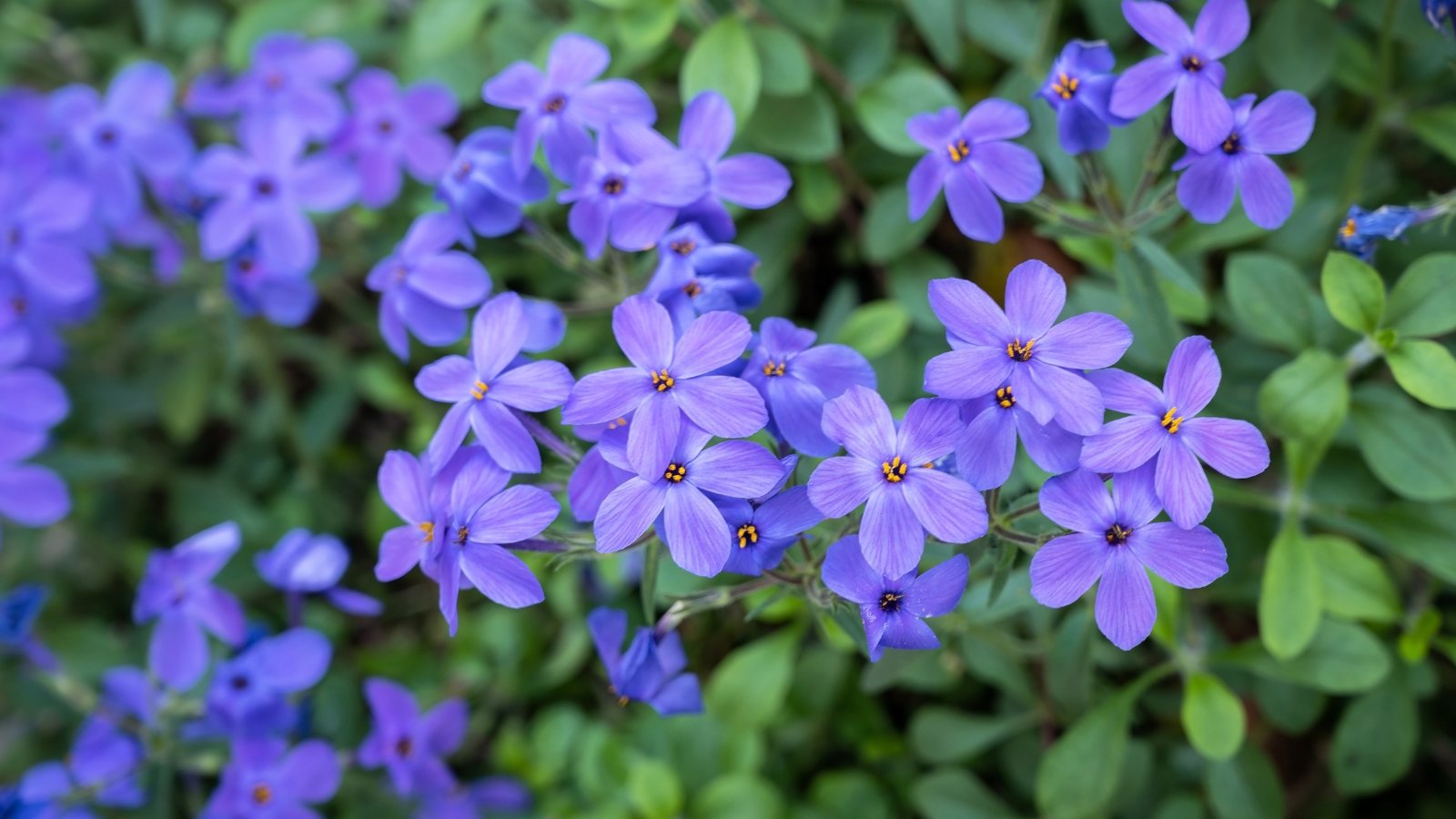
|
|
botanical name Phlox stolonifera |
|---|---|
|
|
sun requirements Full sun to partial shade |
|
|
height 3-12” |
|
|
hardiness zones 5-8 |
Creeping phlox is a low-growing, mat-forming creeper with dense foliage. The easy-care perennials are versatile for many situations, from rocky areas to erosion stabilization zones.
In the spring, dainty clusters of fragrant purple-blue flowers appear on the tips of stems. Narrow, semi-evergreen leaves create a loose carpet that showcases the florets and softens the display even when not in color.
Wintergreen
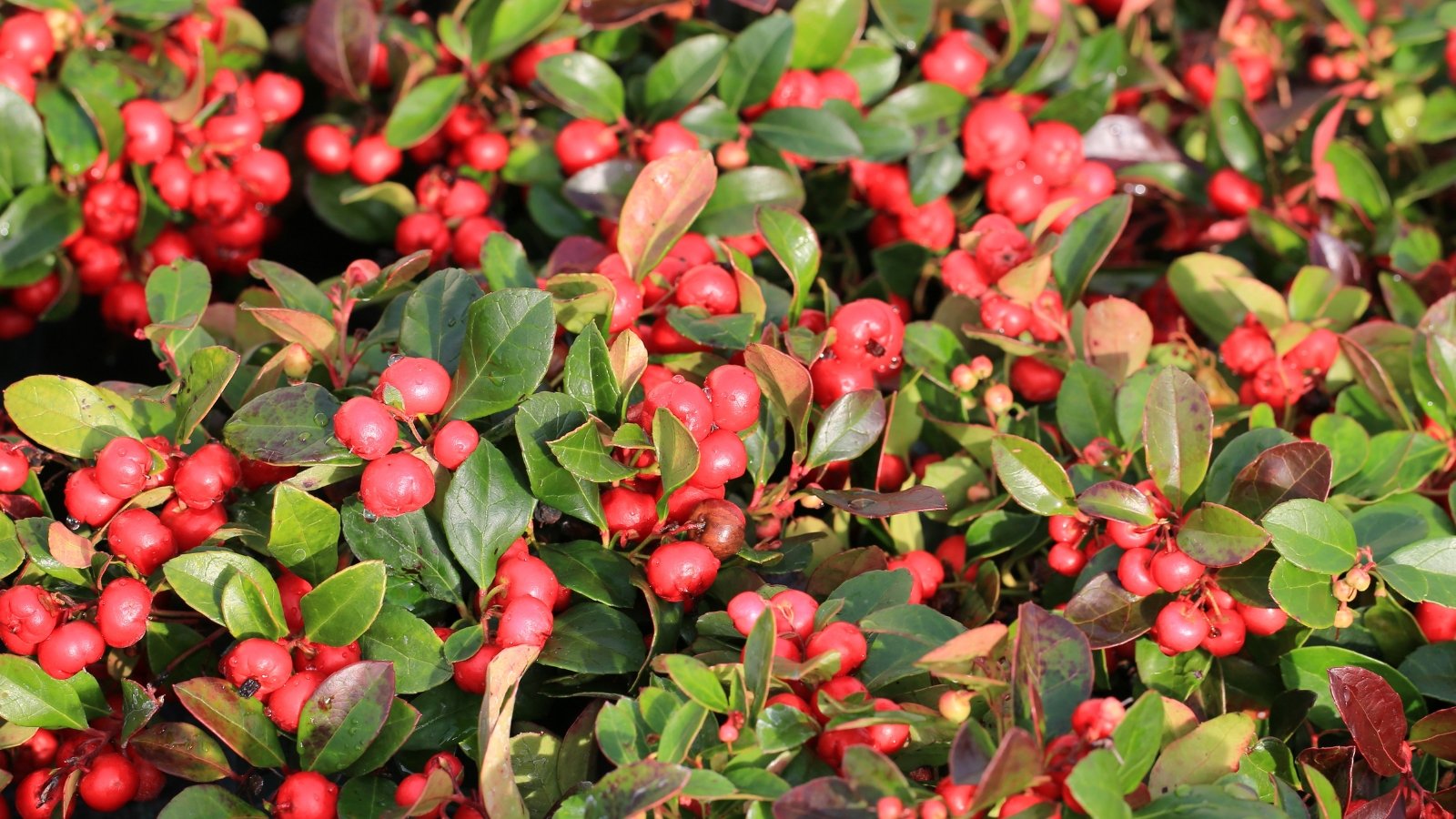
|
|
botanical name Gaultheria procumbens |
|---|---|
|
|
sun requirements Partial to full shade |
|
|
height 4-8” |
|
|
hardiness zones 3-7 |
Wintergreen is a dwarf spreader with rounded, leathery foliage that’s attractive year-round. Nodding bell flowers are pinkish-white in summer and produce bright scarlet berries that decorate bronzey-red leaves in winter.
American wintergreen is a Royal Horticultural Society Award of Garden Merit recipient. It requires little maintenance, has high ornamental value, and grows across a range of climates.
The leaves have a fresh, minty aroma and flavor, and fruits are a favorite for birds and wildlife. Wintergreen thrives in rich soils with even moisture and good drainage but tolerates drier conditions once established.
Rely on Perennials
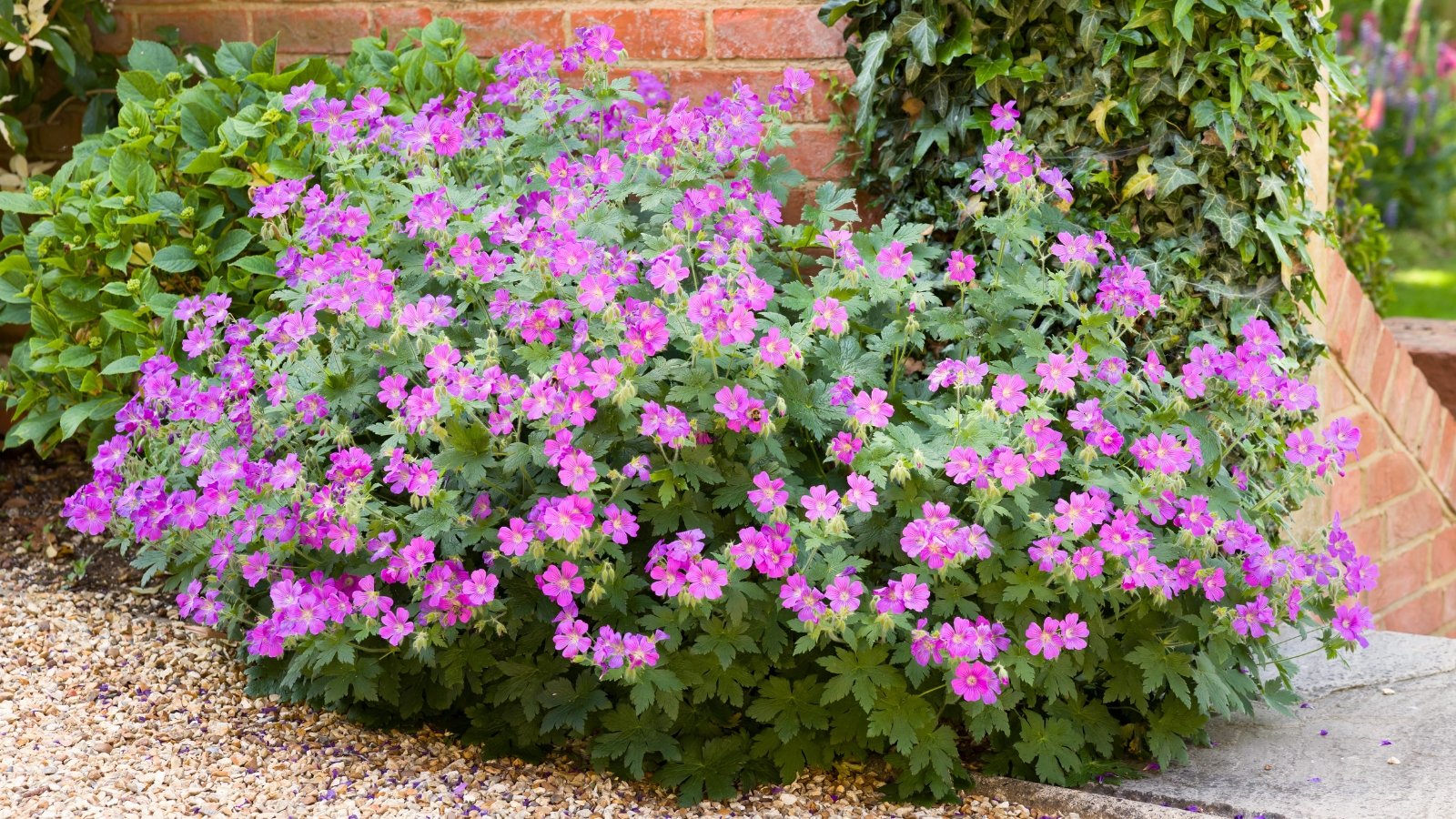
In addition to trees and shrubs, perennials are workhorses for enhancing visual appeal year after year. Foliage adds contrast and a pop of color even in cold months.
Perennials also enrich with ecosystem value for beneficial insects, birds, and other wildlife through nectar and seed production, as host plants, and as shelter.
Hellebore
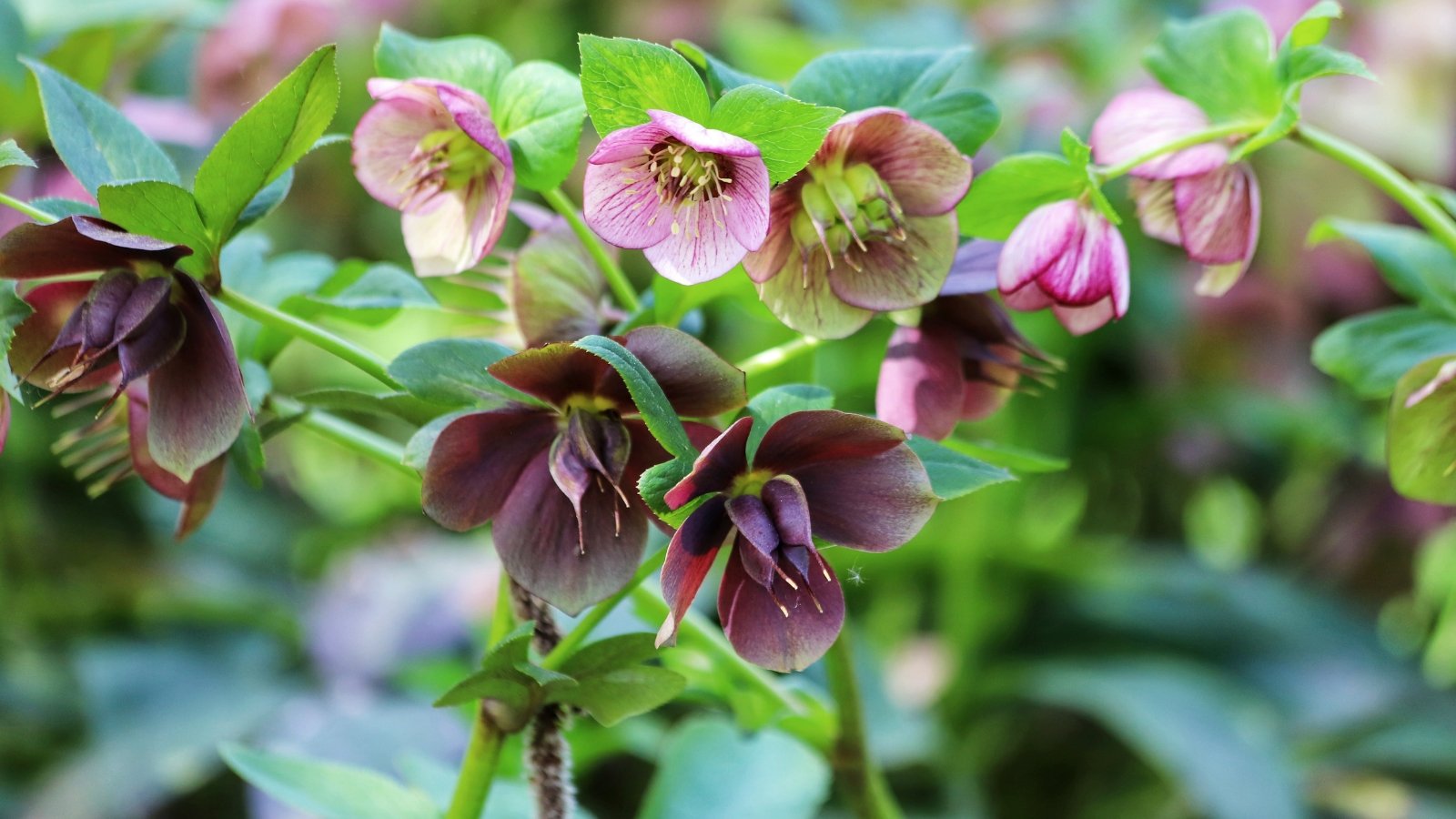
|
|
botanical name Helleborus orientalis |
|---|---|
|
|
sun requirements Partial to full shade |
|
|
height 18” |
|
|
hardiness zones 4-9 |
Hellebores, or lenten roses, have handsome dark olive, palmate leaves. Their exquisite single or double blooms bring beauty when much is quiet in the landscape – elegant nodding flowers appear in late winter and early spring. They boast a long bloom time in rich shades from creamy white to blush to wine red.
Hellebores perform well in well-drained soils in a woodland setting. They colonize slowly in consistently moist, average soil under canopy cover.
Coral Bells
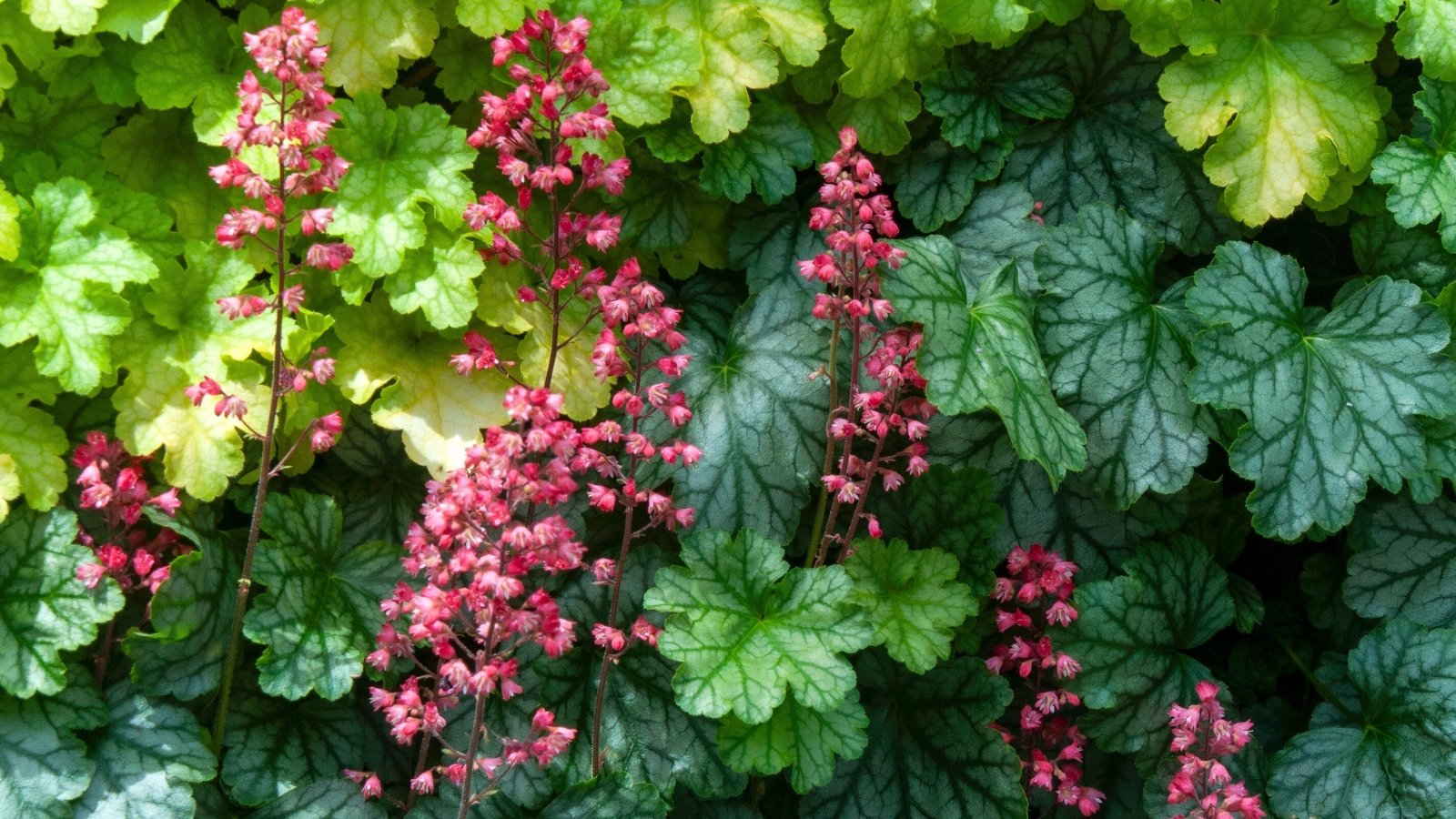
|
|
botanical name Heuchera spp. |
|---|---|
|
|
sun requirements Full sun to partial shade |
|
|
height 1-2’ |
|
|
hardiness zones 3-9 |
Coral bells are a versatile border and accent plant with attractive foliage and delicate bloom sprays in summer. The striking mottled leaves have heavy patterning in hues from berry purple to fiery orange.
Coral bells are semi-evergreen, depending on climate. The durable perennials do well in organically rich, well-draining soils and thrive with morning sunlight.
Hardy Geraniums
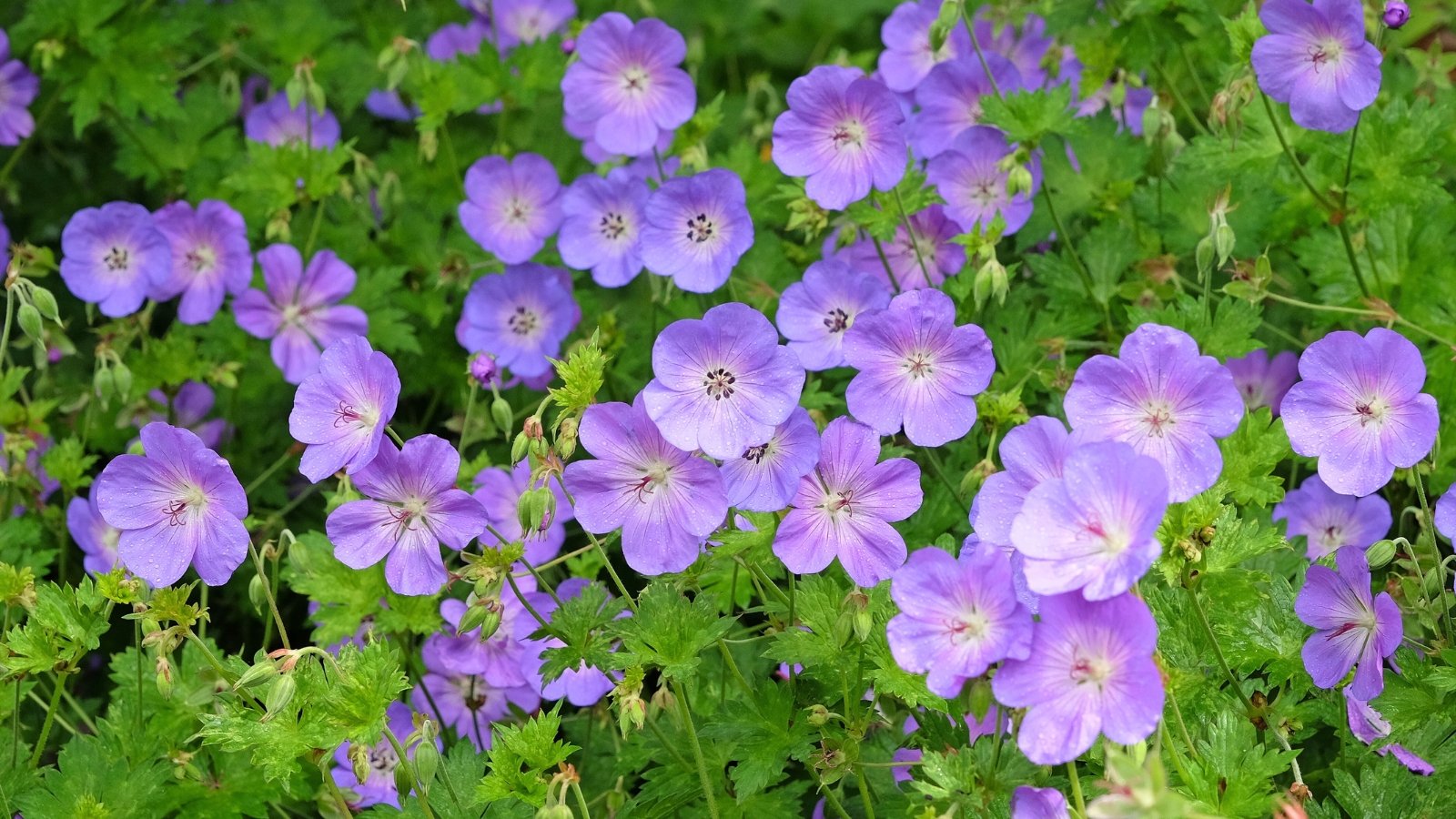
|
|
botanical name Geranium spp. |
|---|---|
|
|
sun requirements Full sun to partial shade |
|
|
height 1-2’ |
|
|
hardiness zones 4-9 |
Hardy geraniums, or cranesbill, feature softly mounding, semi-evergreen foliage. The palmate leaves are attractive year-round. They offer a pillow of rich green in the frosty garden, at least in moderate winters.
Geranium ‘Rozanne’ is a top-performing hybrid with bright purple-blue flowers from spring and early summer and free flowering through fall. For its long bloom time and vigor, ‘Rozanne’ won the Perennial Plant Association’s Perennial Plant of the Year and the Royal Horticultural Society’s Award of Garden Merit.
Hardy geraniums naturalize under optimal conditions but aren’t aggressive or invasive. These low-maintenance growers don’t require deadheading.
Feature Showy Shrubs
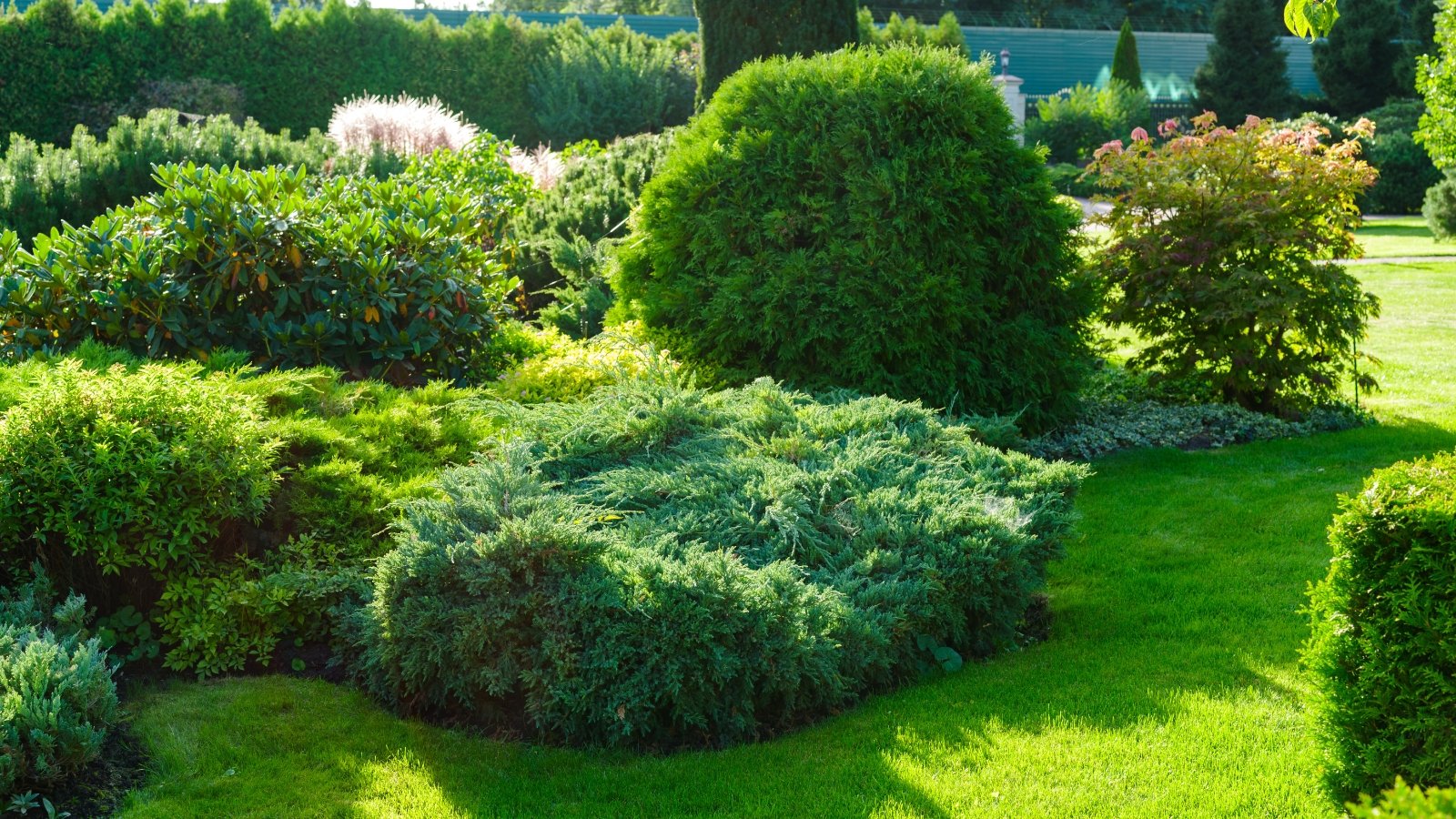
Shrubs play a large role in borders, foundations, and mixed hedges. For a color boost, even among evergreens, choose shrubs with vibrant new growth or autumnal transitions.
Variegated and multi-colored leaves brighten the display. To avoid overuse, repeat selections or use them sparingly for a splash. An overload of variegation can be busy and lose the highlighting effect, so combine the shrubs with a backdrop of solid selections.
Distylium ‘Cinnamon Girl®’
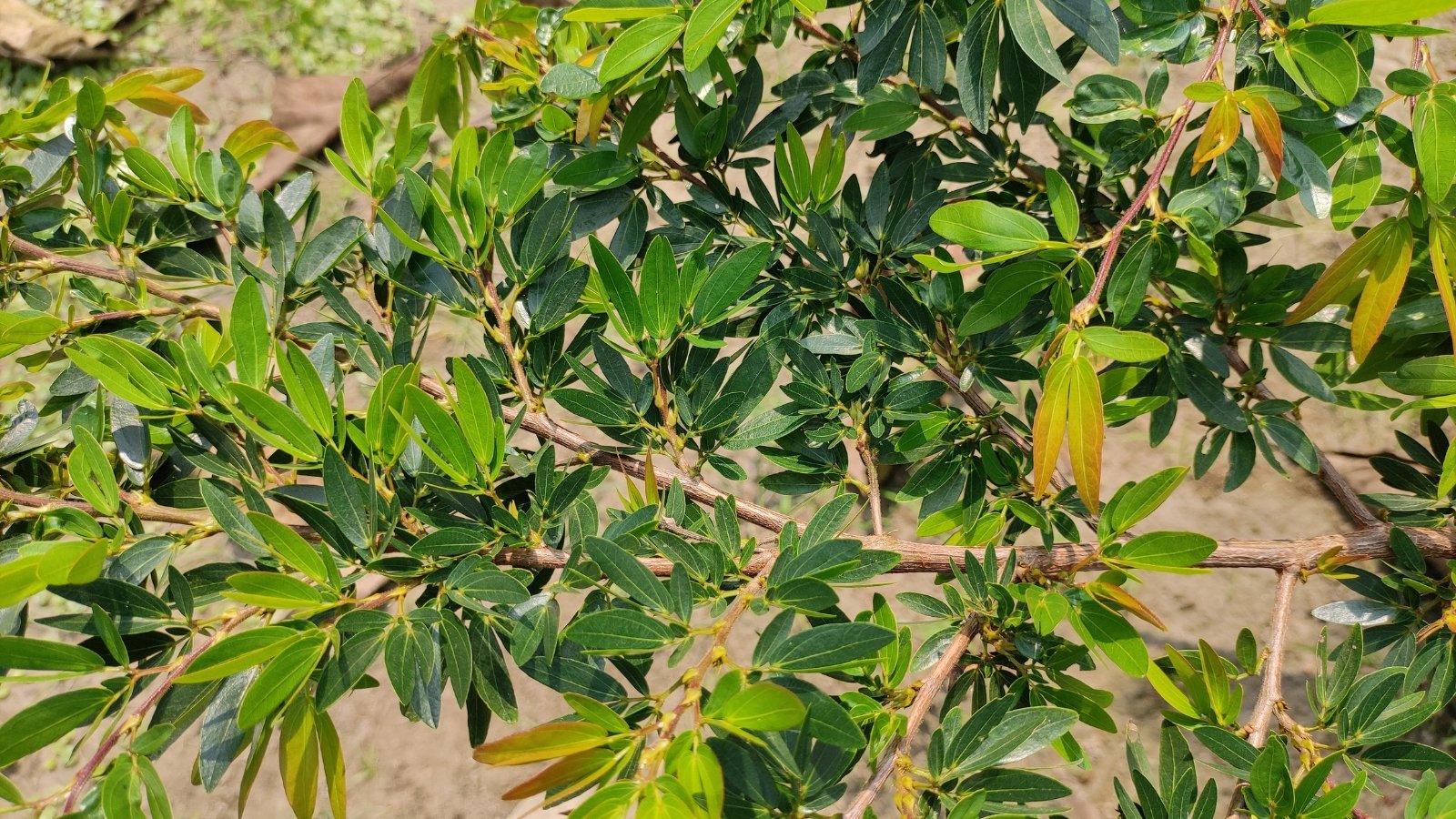
|
|
botanical name Distylium ‘PIIDIST-V’ |
|---|---|
|
|
sun requirements Full sun to partial shade |
|
|
height 2-3’ |
|
|
hardiness zones 6-9 |
Distylium has blue-green leaves on gracefully scaffolding stems. New growth is an asset – it emerges in copper, red, and purple, depending on the variety.
‘Cinnamon Girl®’ is low-growing with fresh growth in purple-red on swirling branches. It’s among the more cold-tolerant cultivars, with hardiness to zone 6 (most are hardy to zone 7).
The architectural shrubs are carefree and even do well in coastal and high-heat conditions. They seldom need pruning and perform reliably with few requirements.
Abelia ‘Miss Lemon’
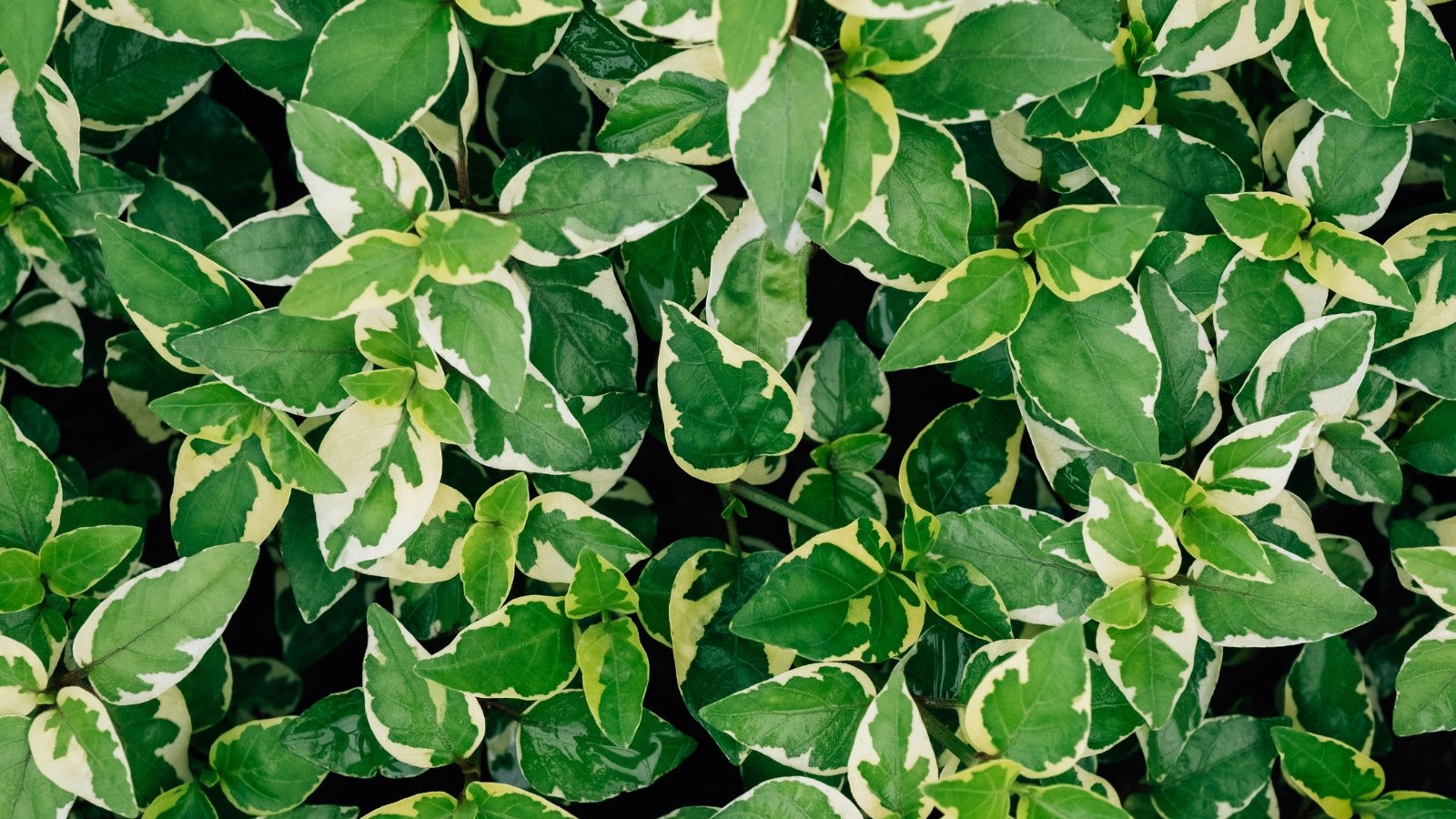
|
|
botanical name Abelia x grandiflora ‘Hopleys’ |
|---|---|
|
|
sun requirements Full sun to partial shade |
|
|
height 3-5’ |
|
|
hardiness zones 6-9 |
Abelia boasts small, glossy, pointed leaves that line woody stems. Dainty tubular pink or white flowers cluster on the tips of stems from summer until frost.
‘Miss Lemon’ has creamy yellow leaves with green centers. Light pink flowers bloom in profusion and are long-lasting. The dwarf Abelia ‘Kaleidoscope’ brings vibrant color-shifting foliage from green and golden yellow in spring to red-orange in fall.
Abelia is disease, pest, and deer-resistant. The tough shrubs withstand heat, humidity, and dry conditions.
Osmanthus ‘Goshiki’

|
|
botanical name Osmanthus heterophyllus ‘Goshiki’ |
|---|---|
|
|
sun requirements Full sun to partial shade |
|
|
height 5-10’ |
|
|
hardiness zones 6-9 |
‘Goshiki’ stands apart for its mottled, multicolored leaves with a delicate holly shape and loose habit. New growth emerges pinkish-bronze and turns green with cream and gold splashes.
‘Goshiki’ offers a twist on traditional evergreen features and has Award of Garden Merit status. Slow growing, it reaches five feet in ten years.
Add Structure with Trees
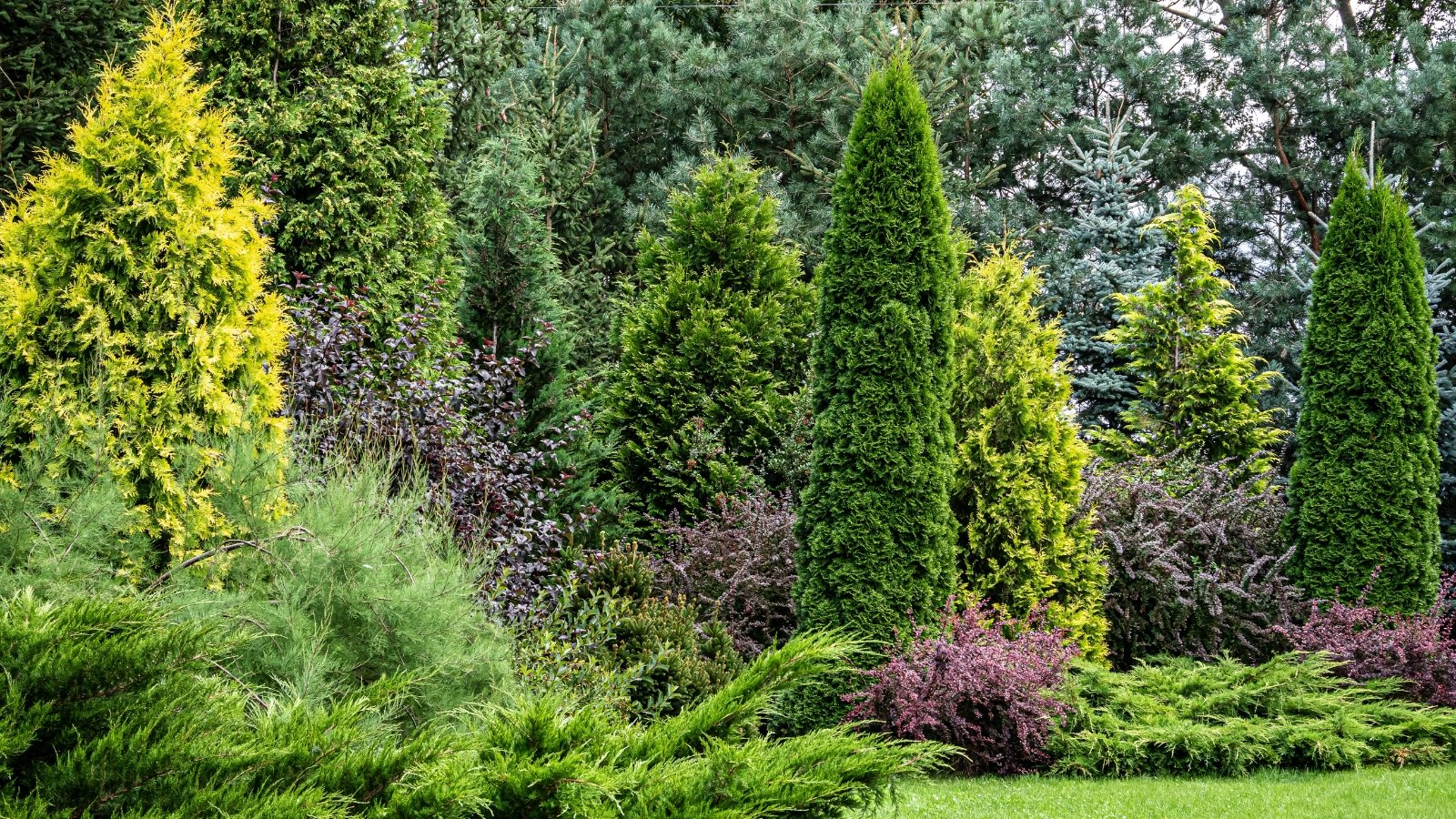
Trees are the “bones” of the garden and impact it the most in size and framework. They carry the most visual weight in addition to their hefty habits and root systems.
Evergreens, then, see the landscape through the seasons with structure. Whether conifers or broadleaf selections, varying forms bring big interest. Flowers, fruits, and cones add pollinator and wildlife forage.
Colorado Blue Spruce ‘Fat Albert’
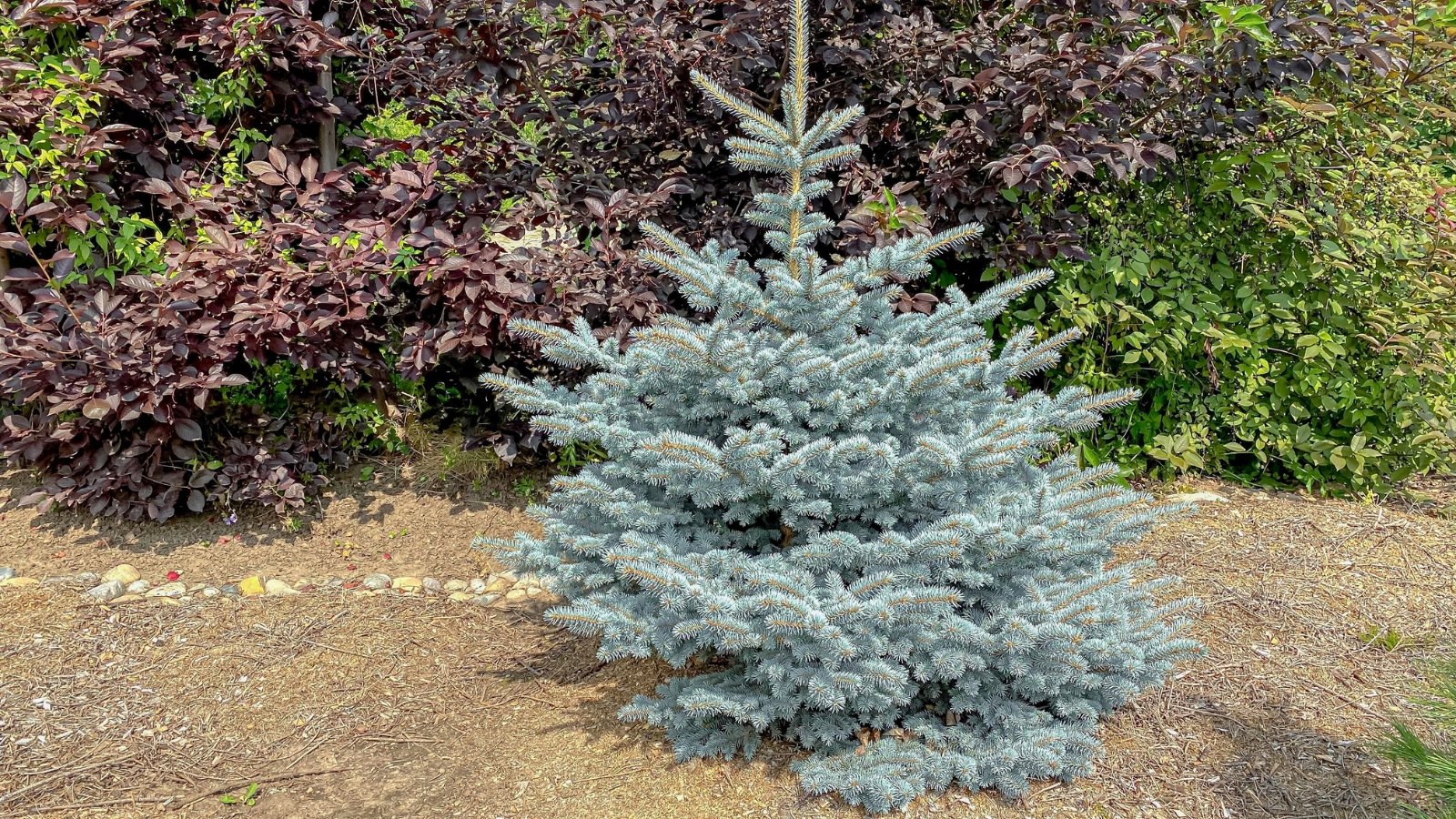
|
|
botanical name Picea pungens ‘Fat Albert’ |
|---|---|
|
|
sun requirements Full sun to partial shade |
|
|
height 10-15’ |
|
|
hardiness zones 2-8 |
A classic pyramidal conifer, sometimes shaped into spirals and other topiaries, spruce makes a beautiful addition to the composition. Dwarf and weeping cultivars create attractive visual interest. Additionally, spreading selections can fill, trail, and spill.
‘Fat Albert’ Colorado blue spruce is a favorite with thick blue needles on stout stems. Smaller in stature than the species, the conical trees are slow-growing at a couple of inches a year. Their broad bases and lush foliage give full-bodied appeal.
Magnolia ‘Teddy Bear®’
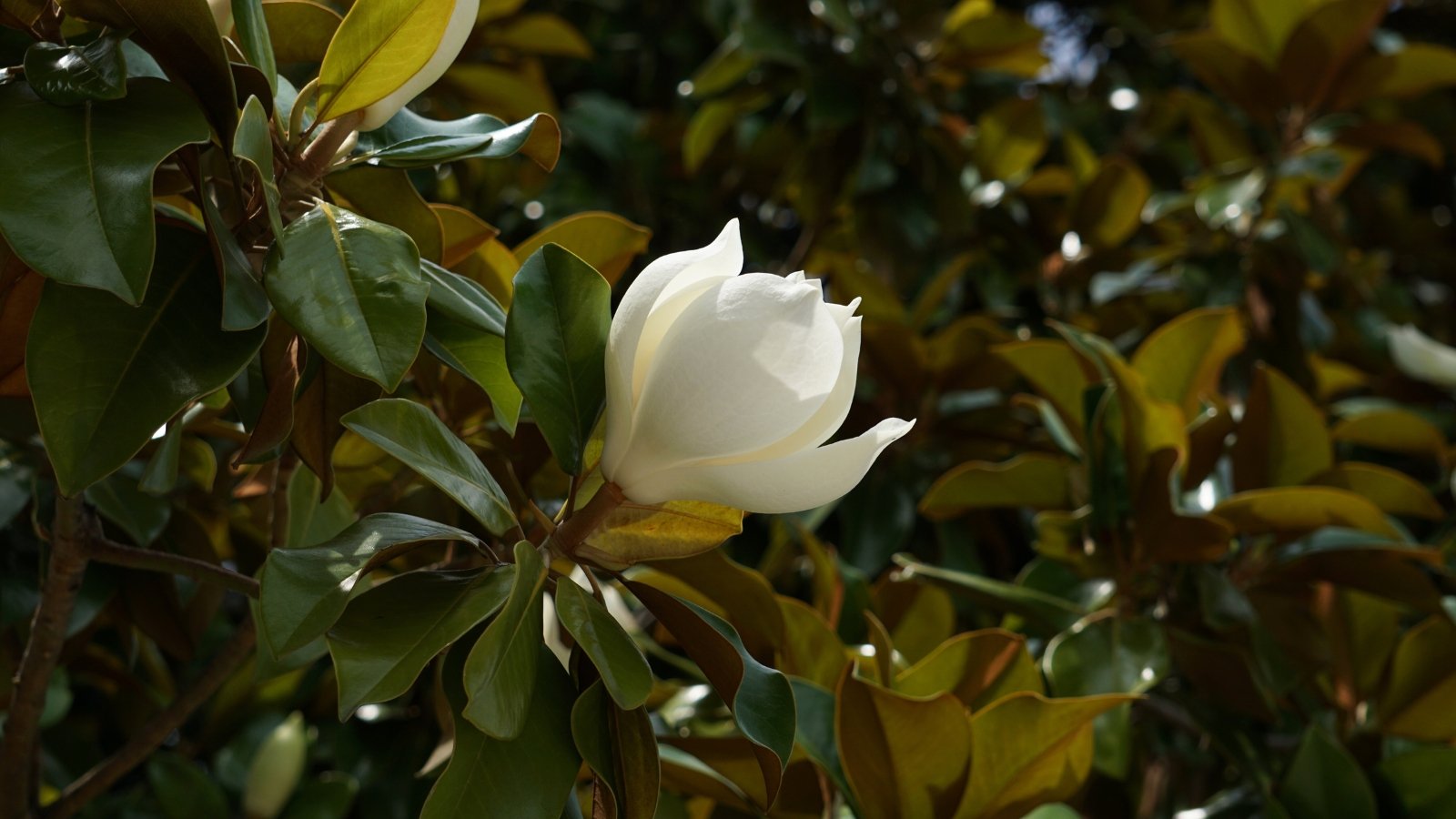
|
|
botanical name Magnolia grandiflora ‘Southern Charm’ |
|---|---|
|
|
sun requirements Full sun to partial shade |
|
|
height 16-20’ |
|
|
hardiness zones 7-9 |
Magnolia, renowned for its lemon-scented, creamy white summer blooms, has broad evergreen leaves with a bronze underside. The large, glossy leaves and well-branched form make a beautiful showcase, especially as leaf undersides become velvety in winter.
Teddy Bear® is smaller than its parent and good for a large container or in the landscape. Classic six to eight-inch white flowers yield interesting seed pods with red berries. Leaves are particularly brown and velvety underneath as the weather cools.
M. grandiflora ‘Little Gem’ is another dwarf grower with dense leaves and a compact, upright habit, smaller and slower growing than the giant Southern magnolia species, ‘Brackens Brown Beauty’ is semi-dwarf and more winter-hardy than other varieties.
Cypress ‘Carolina Sapphire’
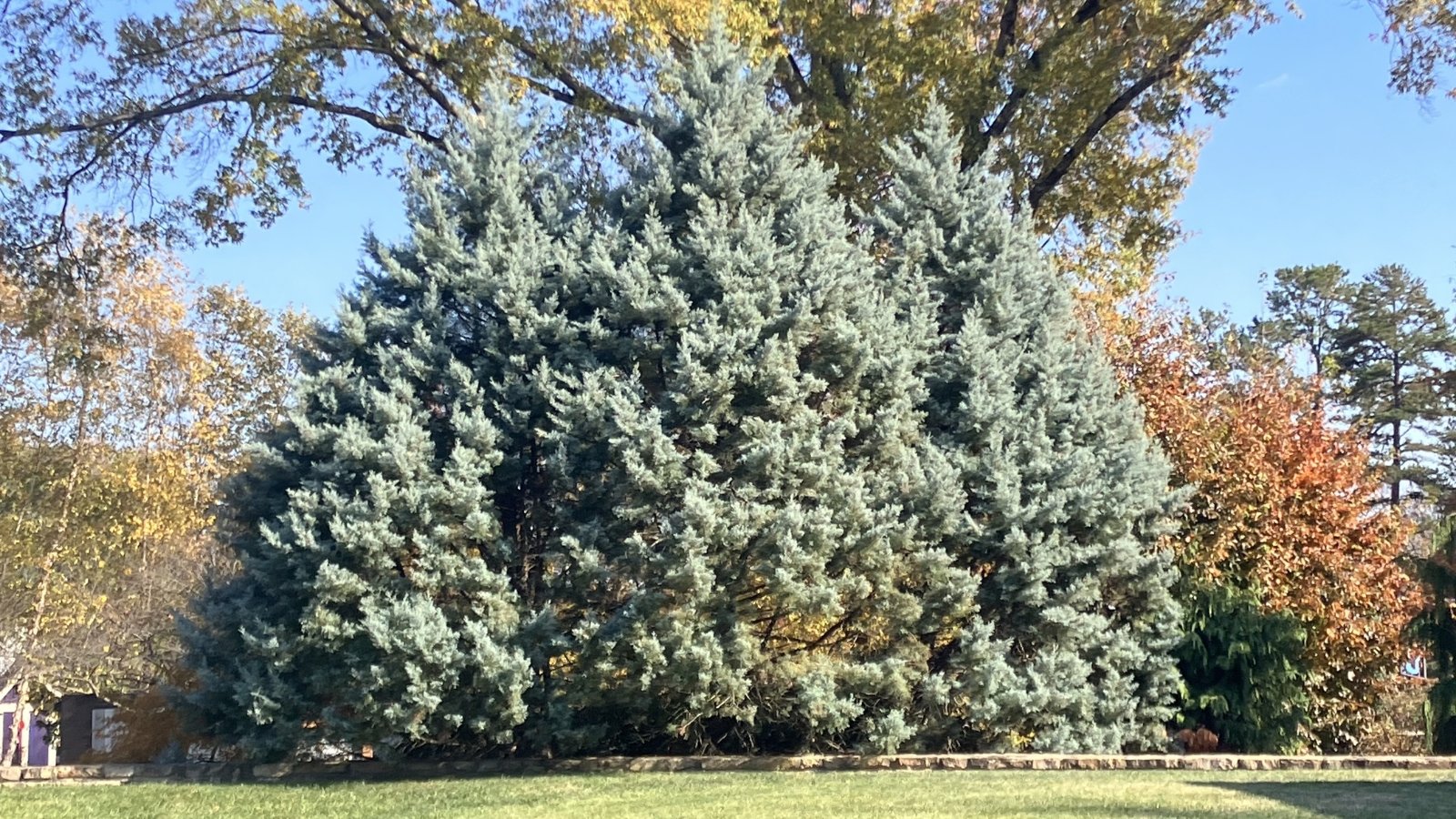
|
|
botanical name Hesperocyparis arizonica ‘Carolina Sapphire’ |
|---|---|
|
|
sun requirements Full sun |
|
|
height 40-50’ |
|
|
hardiness zones 7-11 |
‘Carolina Sapphire’ makes an exceptional pyramidal feature with a narrow form. The Arizona cypress has bright, silvery blue needles on graceful stems that cool down a display with high contrast. The branching is strong and full, but the overall look is soft and hazy.
The conifer is low-maintenance and withstands hot and dry spells once established. It roots easily in various soils. Pruning needs are minimal, with attractive full skirting to the ground.
‘Carolina sapphire’ is a vigorous tree and, in optimal conditions, they become large landscape specimens.
Color For Pots
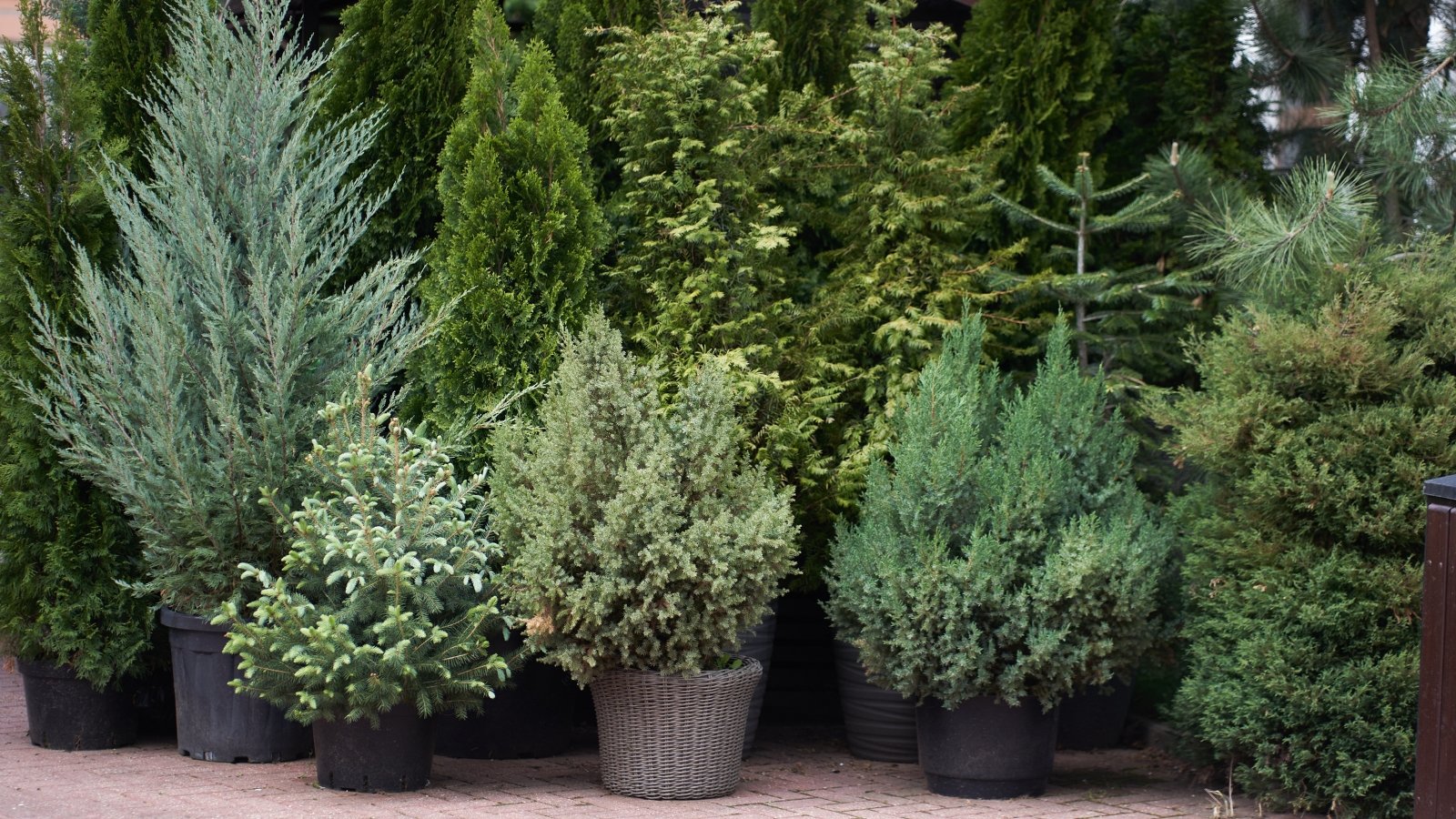
Containers are architectural elements that bring color, shape, and texture. Use them also to feature specimens for fragrance and unique growth habits like topiaries and espaliers. Consider placement, creating a single focal point or grouping and placing them strategically near an entrance, walkway, or seating area.
Additionally, pots are valuable in the quiet winter garden. Hardy evergreens make excellent container centerpieces, surrounded by colorful annuals like pansies and violas.
Daphne ‘Aureomarginata’
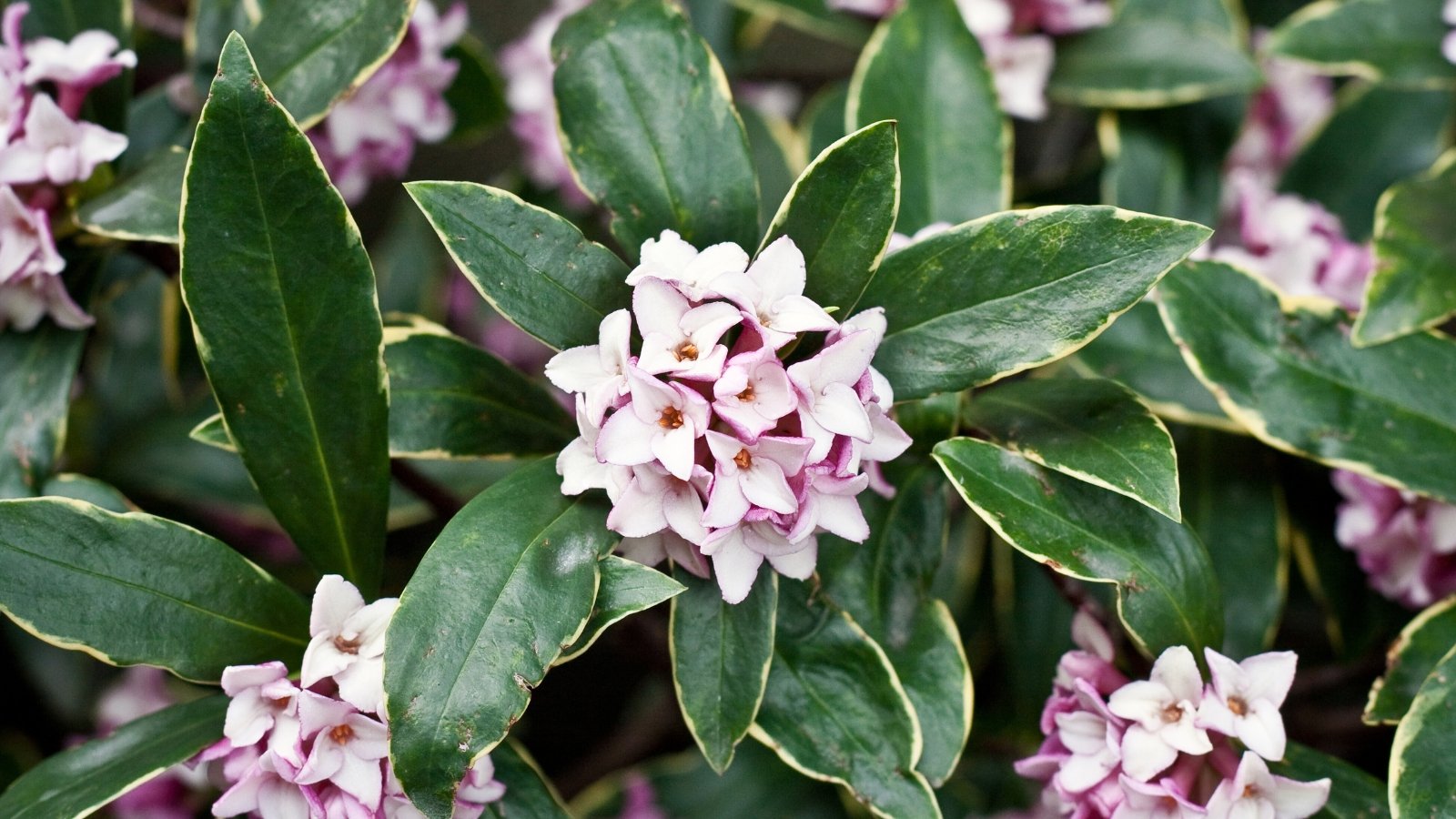
|
|
botanical name Daphne odora ‘Aureomarginata’ |
|---|---|
|
|
sun requirements Partial shade |
|
|
height 3-4’ |
|
|
hardiness zones 7-9 |
Daphne odora is one of the most fragrant of the flowering daphnes, and this winter daphne is elegant in leaf, flower, and perfume. ‘Aureomarginata’ has long, mint green leaves with creamy yellow edges.
Deep purple-pink blossoms emerge in late winter. They also delight the cold-season garden with an intensely sweet fragrance. ‘Aureomarginata’ is a bit more hardy than the species, withstanding temperatures to about 10°F (-12°C). Where not hardy, they overwinter in containers in sheltered areas protected from winds and freezing conditions.
Other brightly variegated D. odora cultivars include ‘Maejima,’ ‘Moonlight Parfait,’ and ‘Banana Split.’ Leaves have wide foliar margins in ivory-yellow tones contrasting the deep green and purple-pink bloom clusters.
Dwarf Threadleaf Cypress ‘Filifera Nana’
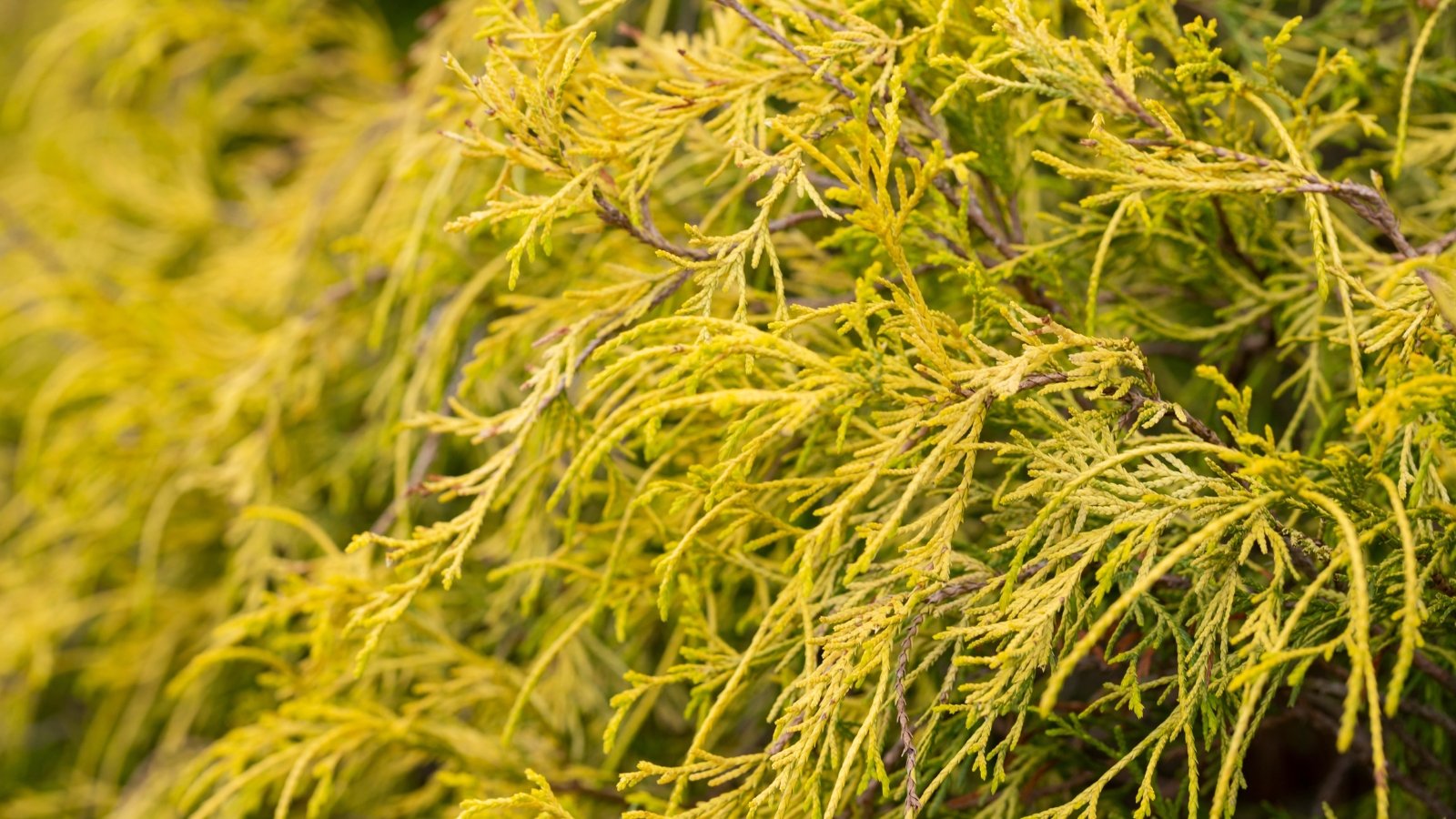
|
|
botanical name Chamaecyparis pisifera ‘Filifera Nana’ |
|---|---|
|
|
sun requirements Full sun to partial shade |
|
|
height 2-5’ |
|
|
hardiness zones 5-8 |
Dward false-cypress, with thread-like, feathery foliage, has a loose, unstructured, openly pyramidal habit. While they become tall trees in their native habitats, most selections in today’s gardens are compact. Their unique texture, mounding forms, and blue, chartreuse, or brassy colorations provide high contrast.
‘Filifera Nana’ is dense with fan leaves in blue-green with whiter undersides. ‘White Pygmy’ builds on the look with tips of white on fine threads.
For a burst of gold, several hybrids bring the brass. ‘Sungold’ is a dwarf, mounding form with gold-tipped threaded foliage. ‘Vintage Gold’ has burnished orangey-gold tones. ‘Golden Mop’ is low-growing with feathery foliage in bright gold and green.
Juniper ‘Blue Point’
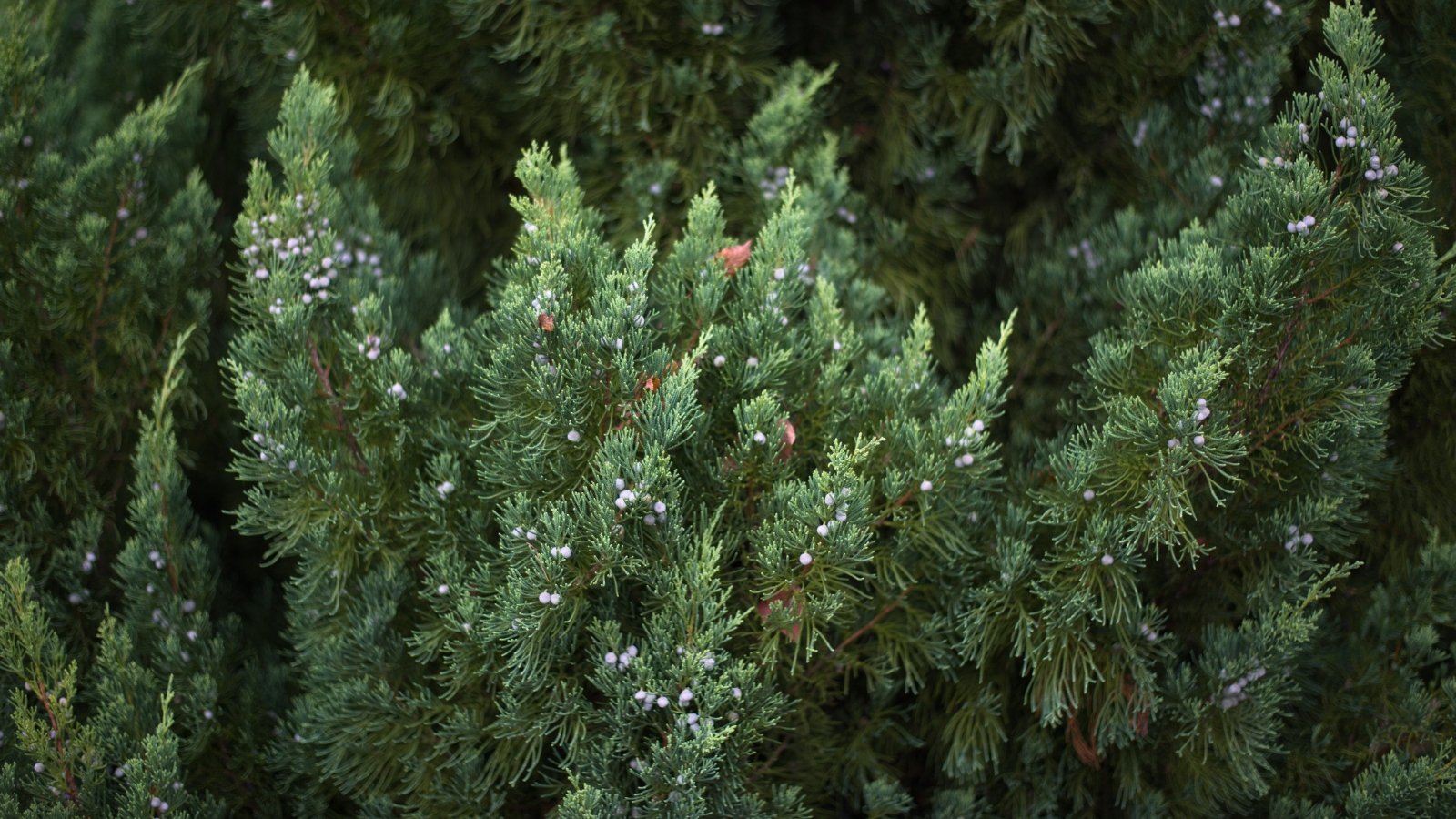
|
|
botanical name Juniperus chinensis ‘Blue Point’ |
|---|---|
|
|
sun requirements Full sun |
|
|
height 12’ |
|
|
hardiness zones 4-9 |
‘Blue Point’ juniper is columnar with short blue needles and blue, waxy berries in colder months. ‘Blue Point’ is a classic Christmas tree shape with tidy upright stems. It particularly shines as a central focal point in containers.
Juniper varieties also include low-growing, mounding, and spreading forms for infill at the foundation. Look for ‘Blue Star’ and ‘Angelica’’ for smaller evergreen container specimens with interesting texture and color.
Junipers take topiary and shaping well for more formal and even whimsical features.
Screening
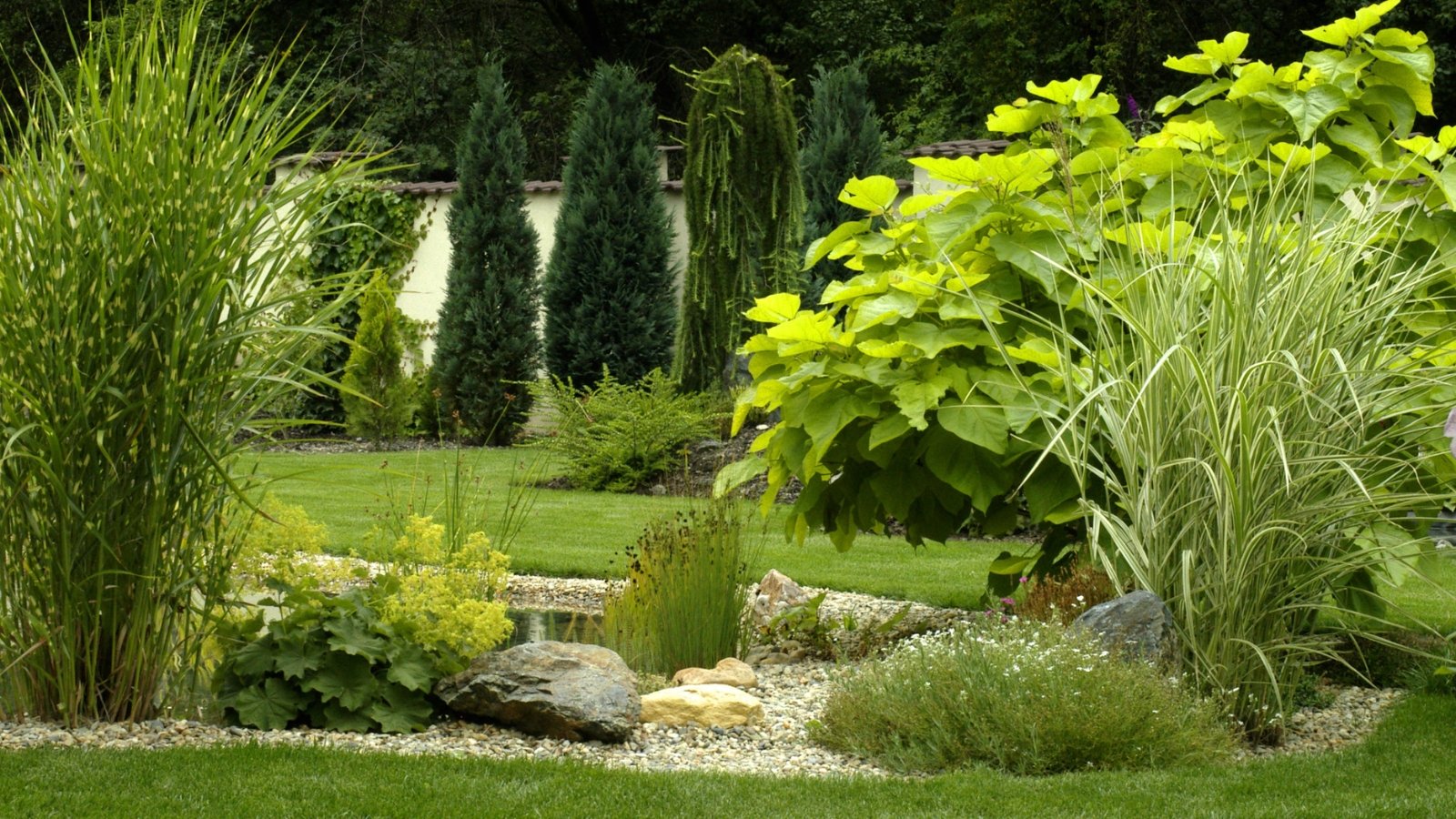
Evergreens provide year-round privacy, screening, and windbreaks. Creating a buffer is a seamless way to disguise unwanted elements. Heating and air units, utility boxes, garbage cans, or the neighbor’s fence magically disappear behind balanced shrubs and trees.
Aside from hiding anything unsightly, planted screens add beauty and enhance privacy. Use them to define spaces and sculpt the view. They also form a handsome evergreen backdrop.
From a single shrub or small group to a structural hedge, it helps to repeat plants from other areas of the garden. The main thing is that the screen fits into the rest of the landscape.
Foundation Plantings
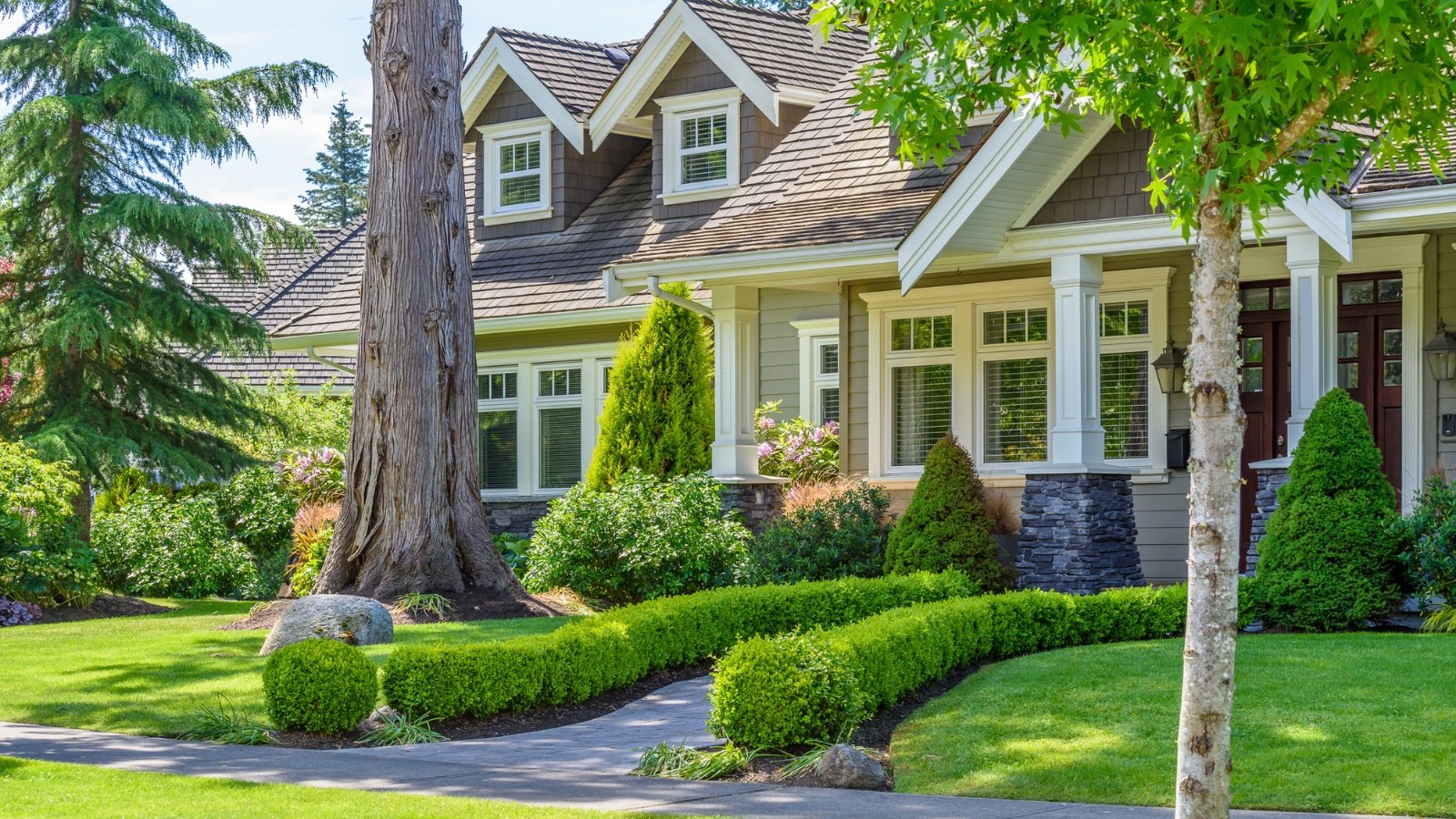
Foundation plantings tie the home to its surroundings, bridging the natural and built environments. Often, foundation designs blend evergreens (the bulk of the display), followed by deciduous flowering shrubs. Perennials and annuals accent with color and interesting foliage.
Use evergreens with height or a strong shape as focal points and shrubs as anchoring “filler” for a punch of color. Repeat forms or plants to unify the scheme.
Mixed Hedges
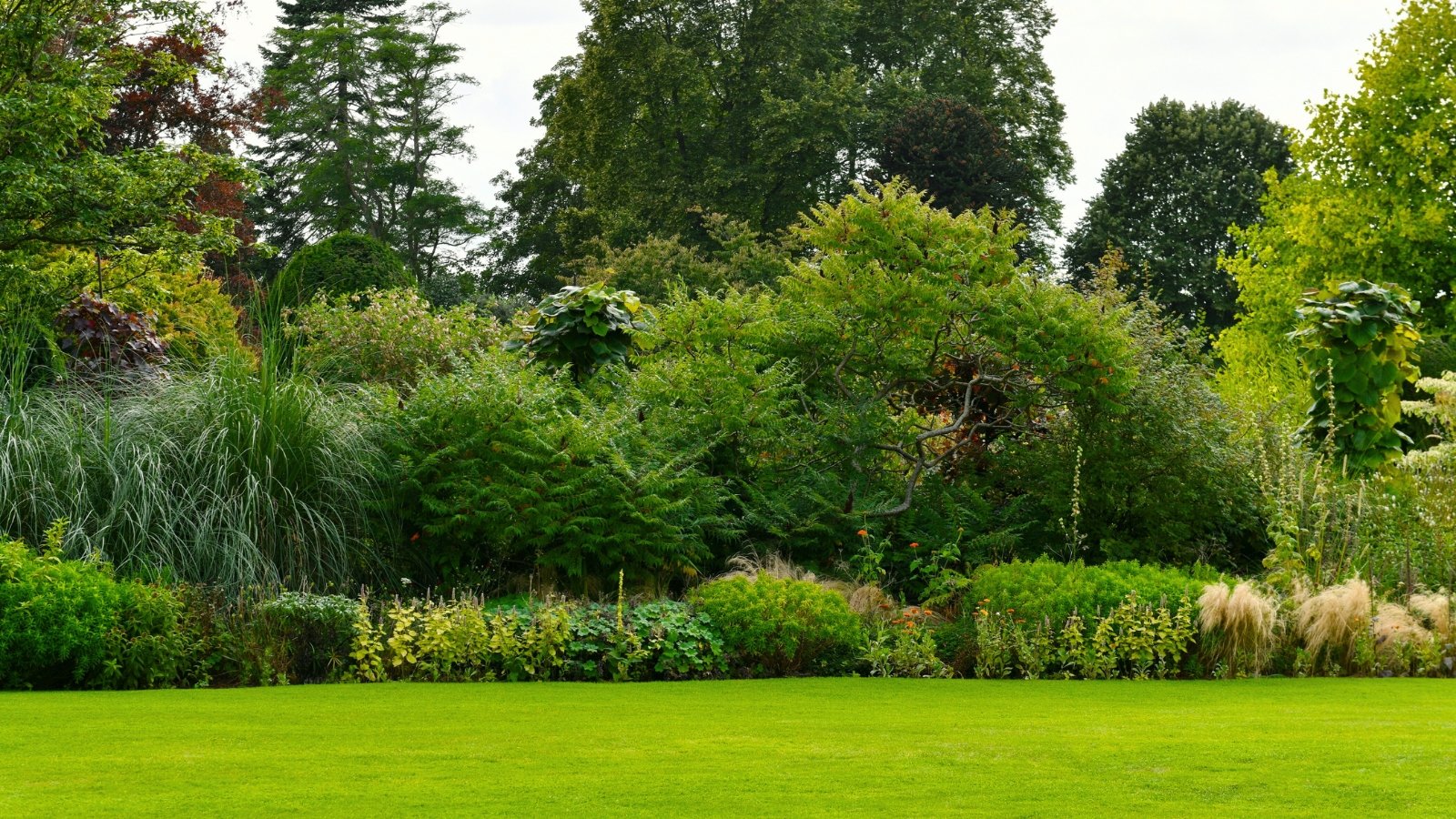
Evergreen hedges lend structure and variation year-round and stand out in winter when the form is more exposed. Rely on stable, hardy evergreens like boxwood, holly, osmanthus, and yew to create defined borders.
Evergreen hedges may be single species for a uniform look, often pruned to make a tidy row. Mixed evergreen screens bring a looser feel with diverse textures and colors. These also offer rhythm through repeated forms and shapes and variation with different heights and colors.


